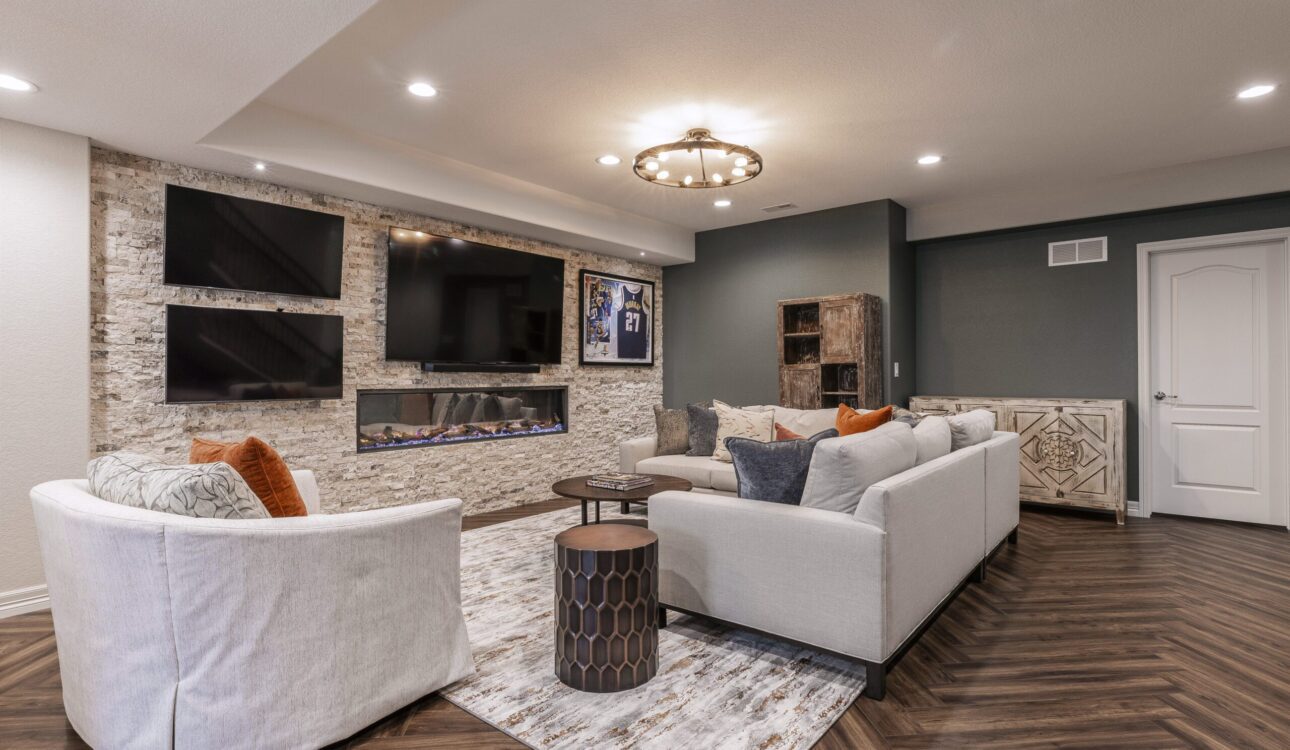Your basement doesn’t have to remain a forgotten storage area filled with holiday decorations and old furniture. With professional basement remodeling, you can transform this underutilized space into a valuable extension of your home that serves your family’s evolving needs. Whether you’re a growing family seeking additional living space, remote workers needing a quiet home office, or entertainment enthusiasts dreaming of the perfect recreation room, basement renovation offers endless possibilities to maximize your home’s potential.
Planning Your Basement Transformation
Assessing Your Current Space
Before diving into finished basement designs, it’s crucial to evaluate your existing basement’s condition and potential. Start by measuring the ceiling height, checking for structural issues, and identifying any moisture problems that need addressing. Most successful basement conversion projects begin with a thorough assessment that considers both the space’s limitations and opportunities.
The planning phase should also include determining your primary goals for the space. Are you looking to create a family entertainment area, a home office for remote work, or perhaps a combination of functions? Understanding your specific needs will guide every decision from layout to material selection, ensuring your basement renovation ideas align with your lifestyle.
Setting Realistic Budget and Timeline
Basement remodeling costs can vary significantly depending on the scope of work and finishes selected. A basic renovation might focus on essential improvements like moisture control, flooring, and lighting, while a comprehensive transformation could include custom built-ins, premium finishes, and advanced entertainment systems.
Consider breaking your project into phases if budget is a concern. You might start with essential infrastructure improvements and basic finishing, then add luxury features like a wet bar or home theater system in subsequent phases. This approach allows you to enjoy your newly finished space sooner while spreading costs over time.
Obtaining Necessary Permits
Most basement renovations require building permits, especially when electrical, plumbing, or structural modifications are involved. Professional contractors like Fineline understand local building codes and can help navigate the permit process, ensuring your project meets all safety requirements and adds legitimate value to your home.
Essential Infrastructure and Moisture Control
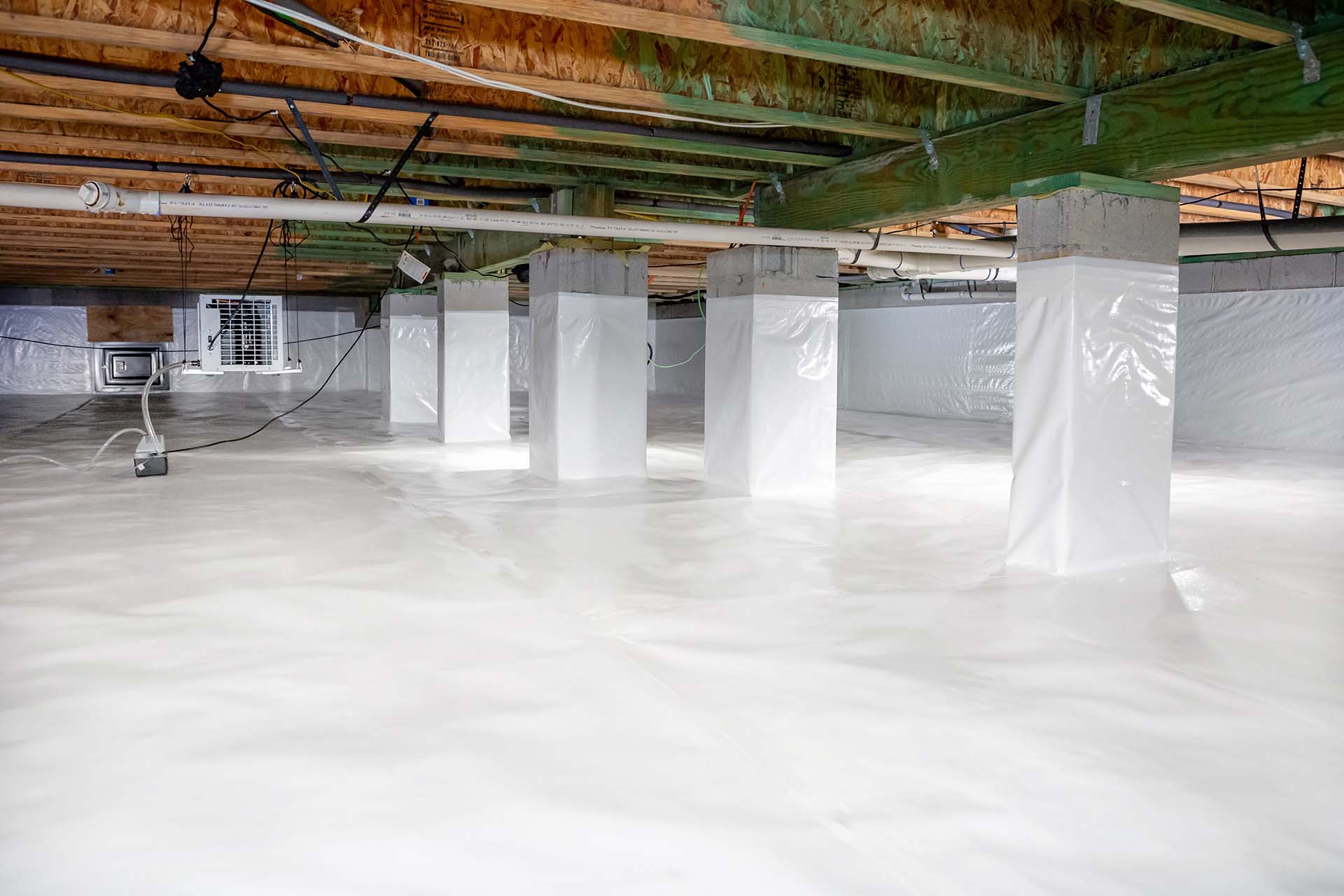
Waterproofing and Moisture Management
The foundation of any successful basement renovation lies in proper moisture control. Even basements that appear dry can develop humidity issues once finished, leading to mold, mildew, and damaged materials. Professional waterproofing solutions include exterior drainage systems, interior sealants, and proper ventilation to maintain optimal humidity levels.
Modern moisture control systems often incorporate dehumidifiers, vapor barriers, and strategic ventilation to create a healthy indoor environment. These systems work together to prevent the moisture problems that can plague finished basements, protecting your investment and ensuring long-term comfort.
HVAC and Ventilation Upgrades
Proper heating, ventilation, and air conditioning are essential for basement comfort year-round. Many homes require HVAC system extensions to adequately serve newly finished basement spaces. This might involve adding ductwork, installing mini-split systems, or upgrading the main system to handle increased capacity.
Ventilation is particularly important in basements, where natural airflow is limited. Strategic placement of supply and return vents ensures consistent temperature control and air quality throughout your newly finished space.
Electrical and Plumbing Considerations
Modern basements require adequate electrical capacity for lighting, outlets, and any specialized equipment like home theaters or exercise equipment. Upgrading electrical systems often involves adding circuits, installing GFCI outlets for safety, and ensuring proper grounding throughout the space.
Plumbing additions might include a wet bar, bathroom, or utility sink, depending on your planned use. These improvements not only enhance functionality but can significantly increase your home’s value and appeal to future buyers.
Design Styles and Layout Options
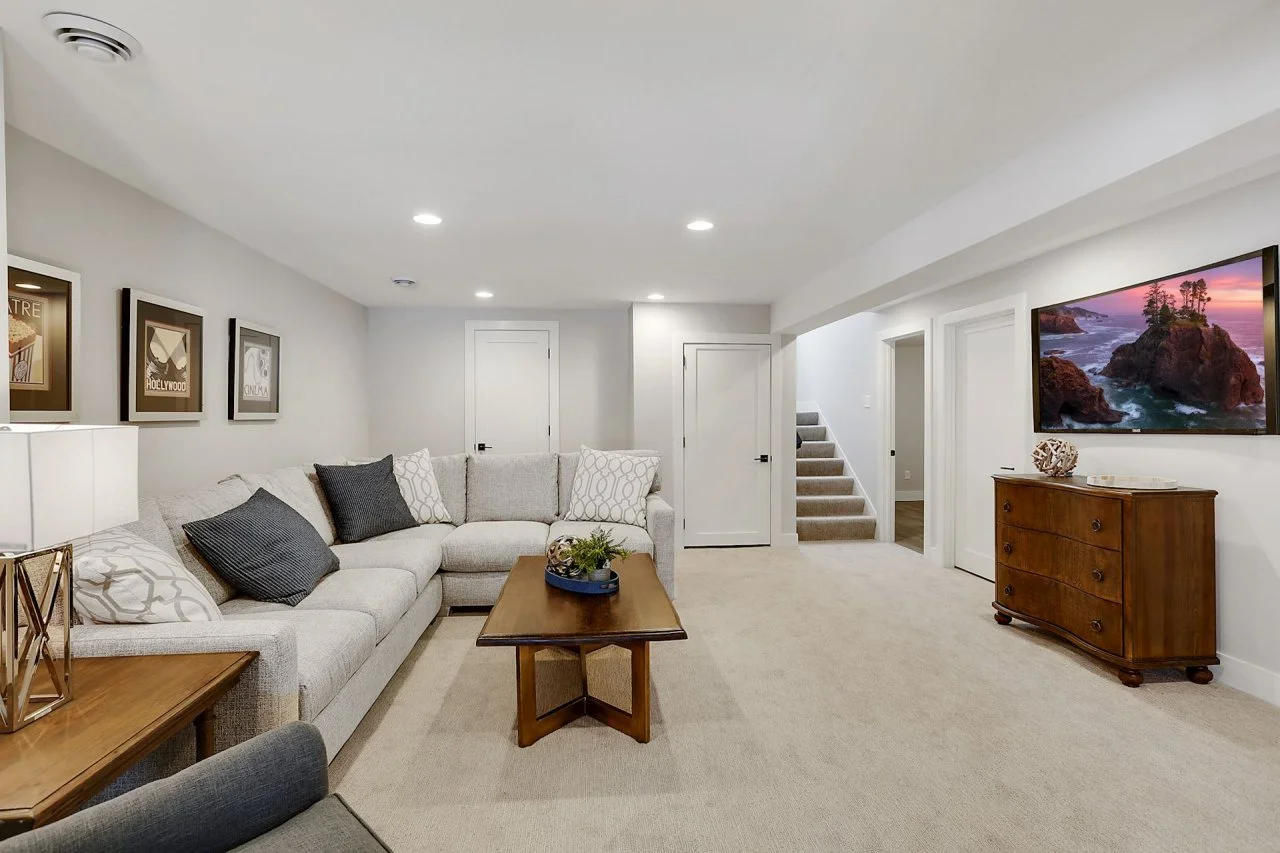
Modern Contemporary Basements
Contemporary basement designs emphasize clean lines, open layouts, and sophisticated material choices. Think polished concrete floors, exposed ceiling elements painted in coordinating colors, and sleek built-in storage solutions. Modern basements often incorporate large format tiles, quartz countertops, and minimalist furniture to create sophisticated spaces that rival main-level rooms.
Lighting plays a crucial role in modern basement design, with recessed LED fixtures, under-cabinet lighting, and statement pendant lights creating layers of illumination. Smart home technology integration, including automated lighting and climate control, adds convenience and efficiency to contemporary basement spaces.
Traditional and Rustic Approaches
Traditional basement renovations often feature warm wood tones, classic moldings, and comfortable, inviting furnishings. Rustic designs might incorporate reclaimed wood elements, stone accents, and cozy seating areas that create a cabin-like atmosphere perfect for family gatherings.
These styles work particularly well for entertainment spaces, home bars, and family rooms where comfort and warmth are priorities. Traditional materials like hardwood flooring, wood paneling, and classic light fixtures create timeless appeal that complements many home styles.
Industrial and Urban Aesthetics
Industrial-style basements celebrate the space’s structural elements, often leaving ceiling joists exposed and incorporating metal, concrete, and brick materials. This approach can be both cost-effective and stylish, turning potential design challenges into distinctive features.
Urban industrial designs might include polished concrete floors, metal railings, and exposed ductwork painted in coordinating colors. These elements create sophisticated spaces perfect for home offices, workshops, or entertainment areas with a distinctly modern edge.
Lighting Solutions for Basement Spaces
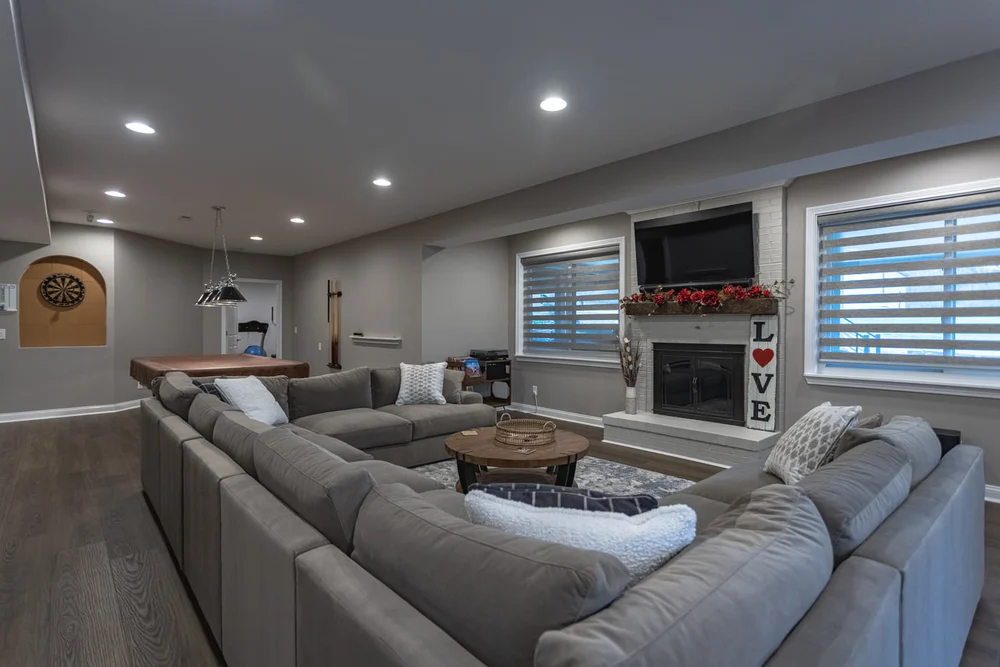
Overcoming Natural Light Limitations
Basements typically have limited natural light, making artificial lighting design crucial for creating inviting, functional spaces. Strategic lighting planning can transform a dark, unwelcoming basement into a bright, comfortable living area that rivals any main-level room.
Consider installing larger window wells or egress windows where possible to maximize natural light. These improvements not only brighten the space but also provide emergency exits required by building codes for habitable basement rooms.
Layered Lighting Design
Successful basement lighting incorporates multiple layers: ambient lighting for overall illumination, task lighting for specific activities, and accent lighting to highlight architectural features or artwork. Recessed ceiling fixtures provide general lighting, while table lamps, floor lamps, and under-cabinet lights add warmth and functionality.
LED technology offers energy-efficient options with excellent color rendering and dimming capabilities. Smart lighting systems allow you to adjust brightness and color temperature throughout the day, creating optimal conditions for work, relaxation, or entertainment.
Creative Lighting Solutions
Consider unique lighting approaches that work particularly well in basements. Track lighting can highlight artwork or architectural features while providing flexible illumination options. Cove lighting behind crown molding or in ceiling recesses creates soft, indirect light that makes low ceilings feel higher.
Statement light fixtures can serve as focal points in basement designs. A dramatic chandelier over a seating area or distinctive pendant lights over a bar can add personality and visual interest to your finished space.
Multi-Functional Space Ideas
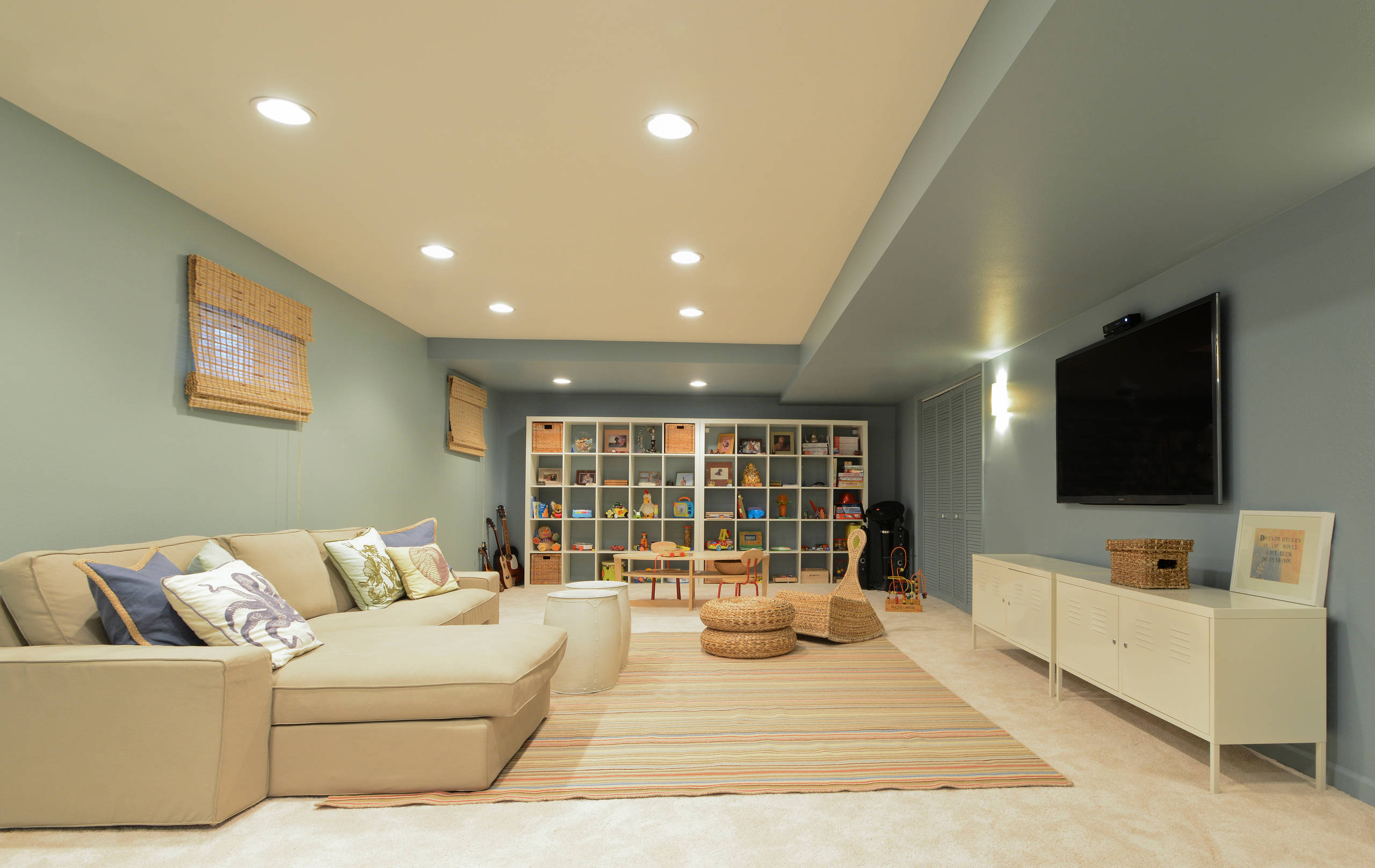
Home Office and Study Areas
With remote work becoming increasingly common, basement home offices offer quiet, dedicated workspace away from household distractions. Proper planning ensures adequate lighting, ventilation, and technology infrastructure for productive work environments.
Consider built-in desks, custom storage solutions, and sound-dampening materials to create professional-quality office spaces. Multiple workstations can accommodate different family members’ needs, from professional work to homework and creative projects.
Entertainment and Recreation Zones
Basement conversion projects often focus on entertainment, creating spaces for family movie nights, game tournaments, or casual socializing. Home theaters with projection systems, surround sound, and comfortable seating transform basements into private entertainment venues.
Game rooms might include pool tables, arcade games, or sports viewing areas with large-screen televisions. These spaces benefit from durable flooring, adequate electrical capacity, and sound control to prevent noise transmission to upper levels.
Guest Suites and In-Law Apartments
Converting basements into guest suites or in-law apartments requires careful planning to ensure comfort, privacy, and safety. These projects typically involve adding full bathrooms, kitchenettes, and separate entrances to create self-contained living spaces.
Proper egress windows, adequate ceiling height, and comprehensive moisture control are essential for habitable basement apartments. Professional design ensures these spaces meet building codes while providing comfortable, attractive accommodations.
Materials and Finishes Selection
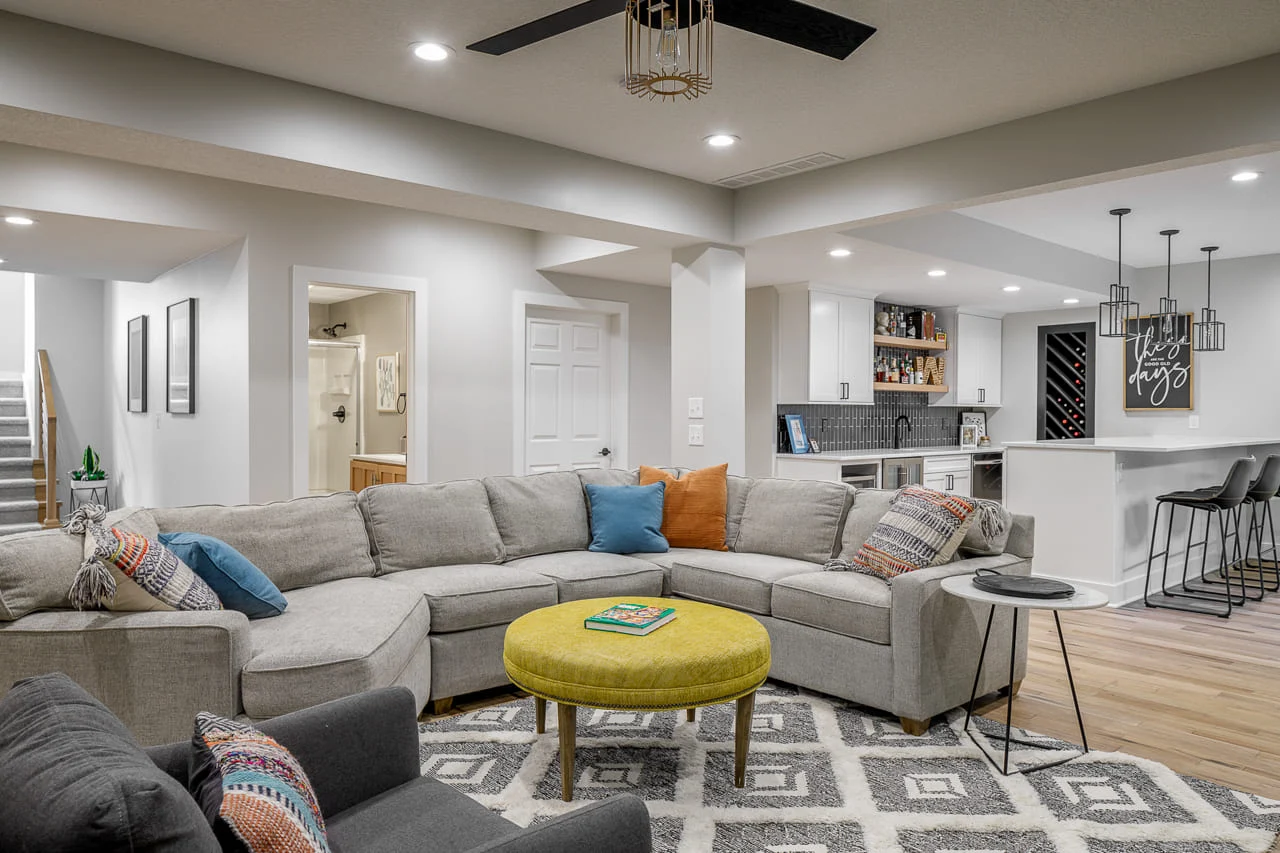
Moisture-Resistant Flooring Options
Basement flooring must withstand potential moisture while providing comfort and style. Luxury vinyl plank (LVP) flooring offers the appearance of hardwood with superior moisture resistance. Polished concrete provides a modern, durable surface that works well with radiant heating systems.
Ceramic and porcelain tiles offer unlimited design possibilities with excellent moisture resistance. Area rugs can add warmth and comfort over hard surfaces while remaining easy to clean or replace if moisture issues occur.
Wall Treatments and Insulation
Proper wall insulation and finishing are crucial for basement comfort and energy efficiency. Rigid foam insulation boards provide excellent thermal performance while resisting moisture. Drywall installation requires careful attention to moisture barriers and proper fastening techniques.
Alternative wall treatments might include decorative panels, stone or brick veneer, or specialty paints designed for basement environments. These materials should balance aesthetics with practical considerations like moisture resistance and ease of maintenance.
Ceiling Solutions for Low Heights
Many basements have limited ceiling height, requiring creative solutions to maximize the feeling of space. Drop ceilings with recessed lighting provide easy access to utilities while creating clean, finished appearance. Painted exposed ceilings can work well in industrial or modern designs.
Coffered ceilings or decorative beams can add visual interest while working around structural elements. Light colors and strategic lighting help create the illusion of height in challenging spaces.
Professional Installation Process
Design and Planning Phase
Professional basement remodeling begins with comprehensive design and planning services. Experienced contractors assess your space, understand your goals, and create detailed plans that maximize functionality while addressing technical challenges.
The design phase includes material selection, layout optimization, and coordination with various trades. Professional designers help balance your vision with practical considerations like building codes, structural limitations, and budget constraints.
Construction and Project Management
Quality basement renovations require skilled coordination of multiple trades including electrical, plumbing, HVAC, and finishing contractors. Professional project management ensures work proceeds efficiently while maintaining high quality standards throughout the process.
Regular communication keeps homeowners informed of progress while addressing any unexpected challenges that arise during construction. Experienced contractors anticipate potential issues and have solutions ready to minimize delays and cost overruns.
Final Inspection and Warranty
Professional installations include thorough final inspections to ensure all work meets quality standards and building codes. Comprehensive warranties protect your investment and provide peace of mind for years to come.
Post-completion support includes maintenance guidance and prompt response to any warranty issues. Quality contractors stand behind their work and maintain relationships with clients long after project completion.
Ready to transform your basement from storage space into valuable living area? Contact Fineline today to schedule your consultation and discover how professional basement remodeling can enhance your home and lifestyle. Our experienced team specializes in creating beautiful, functional basement spaces that exceed expectations while adding significant value to your property.
Frequently Asked Questions
What's the average cost of basement remodeling?
Basement remodeling costs vary widely based on size, finishes, and features included. Basic finishing might range from $25-50 per square foot, while luxury renovations can exceed $100 per square foot. Factors affecting cost include moisture control needs, ceiling height modifications, bathroom additions, and premium finishes. Professional estimates provide accurate pricing based on your specific requirements.
Do I need permits for basement remodeling?
Most basement renovations require building permits, especially when adding electrical, plumbing, or structural modifications. Permits ensure work meets safety codes and local regulations. Professional contractors handle permit applications and inspections, ensuring your project complies with all requirements while protecting your investment and home value.
How do you prevent moisture problems in finished basements?
Effective moisture control combines exterior drainage, interior waterproofing, proper ventilation, and humidity control systems. Professional waterproofing addresses foundation issues before finishing begins. Vapor barriers, dehumidifiers, and strategic ventilation maintain optimal humidity levels. Quality materials and proper installation techniques prevent moisture-related problems in finished spaces.
Can any basement be converted into living space?
Most basements can be converted, but some require significant modifications to meet building codes. Minimum ceiling height requirements, egress window needs, and structural considerations affect feasibility. Professional assessment determines what modifications are necessary and whether conversion makes financial sense. Some basements may require ceiling lowering or floor raising to achieve code compliance.
Source Links
Website Sources Used:
- National Association of Home Builders – Basement Remodeling Guidelines – https://www.nahb.org/
- International Residential Code (IRC) – Basement Requirements – https://codes.iccsafe.org/
- Environmental Protection Agency – Moisture Control in Homes – https://www.epa.gov/
- American Society of Heating, Refrigerating and Air-Conditioning Engineers – Basement HVAC Guidelines – https://www.ashrae.org/
- Better Homes & Gardens – Basement Design Ideas – https://www.bhg.com/
- This Old House – Basement Renovation Guide – https://www.thisoldhouse.com/
